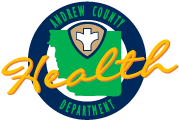Caring for Children in Disasters
106 North 5th Street, Savannah, Missouri 64485, USA

Protecting and Supporting Children During Disasters
Emergencies can happen at any time, from severe weather to disease outbreaks, and having a plan can make all the difference. Taking simple steps now can help you and your loved ones stay safe during unexpected events. Explore resources and tools to help you prepare for the unexpected.
How Children Are Different in Disasters
Children are not only physically different from adults, but their emotional and psychological responses to disasters also vary. They are more likely to suffer from physical injuries or illnesses due to their developing bodies. Additionally, they might have a harder time understanding what’s happening and how to keep themselves safe. Their emotional responses can be unpredictable, and they may need extra help processing traumatic events.
Protecting Children in Emergencies
Ensuring your child’s safety involves more than just physical protection. Emotional support is equally important. Keep in mind that children, especially younger ones, might freeze, cry, or show signs of fear during an emergency. Older children and teens may be more prone to following others’ actions, so it’s crucial to provide clear guidance.
Preparing for Emergencies
Preparation is key. Before an emergency occurs, make sure your child is informed and involved. Prepare an emergency kit with essentials for each family member, including age-appropriate supplies for babies and young children. Create a family communication plan and ensure your children know how to reach you or 911 in case of separation.
Children’s emotional reactions to emergencies can persist long after the event. They may struggle with anxiety, fear, or confusion. Understanding how to help them process their emotions will ensure they can heal and bounce back. Offering comfort, reassurance, and open communication will help them regain a sense of security.
During School Hours
Children spend a significant portion of their day in school or daycare. Be sure to check with schools about their emergency plans, including how they will contact parents and where they will take children in case of evacuation. Keep contact information up to date, and ensure your child’s emergency information is easily accessible.
After an Emergency
Recovery from a disaster may take time, and reuniting with your child could be challenging if you are separated. Have a reunification plan in place and know where to go for support. Helping children cope after the event can reduce the risk of long-term emotional or psychological issues.
By understanding the unique needs of children and planning ahead, you can better protect and care for them during an emergency, providing them with the support they need to stay safe and emotionally resilient.
Additional Resources
- Emergency Preparedness for Families
- Helping Children Cope with Emergencies
- Disaster Reunification Plans
- CDC: Emergency Preparedness for Children
Visit the links above for more detailed information and resources to ensure your child’s safety and well-being during a disaster.
A Plan for Every Family
In times of disaster, the well-being of children depends on preparedness, clear communication, and emotional support. By taking proactive steps before, during, and after an emergency, you can help minimize stress and ensure that your children are safe, cared for, and supported throughout the recovery process. Prepare now to protect their future.
Additional Resources
Need Assistance?
Have questions or need guidance? Our team is here to help! Reach out today and let us support your health and wellness journey.
Contact Us
info@andrewcountyhealth.com
106 North 5th Street, Savannah, Missouri 64485, USA
- Mon - Fri
- -
- Sat - Sun
- Closed



